Donald Trump did it again: under a storm of applause and flashing cameras, the U.S. president declared the “end of the war in Gaza.” Smiling triumphantly and speaking with his trademark bravado, Trump announced from Egypt that “the long and painful nightmare is finally over” and that the world is witnessing “a historic dawn for a new Middle East.”
Yet, behind the celebration and the headlines, many question whether this marks the true end of the conflict—or merely a fragile truce wrapped in political optimism.
A Historic Agreement — on Paper
On October 13, 2025, the United States, Egypt, Qatar, and Turkey signed a peace document in Sharm el-Sheikh, Egypt, aiming to end more than two years of bloodshed between Israel and Hamas. Drafted in Washington and championed by Trump himself, the plan outlines an immediate ceasefire, the exchange of hostages and prisoners, and the reopening of humanitarian corridors into Gaza.
Dubbed the “Trump Peace Plan for Gaza,” the agreement unfolds in three stages. The first—now underway—focuses on halting hostilities and releasing detainees. The next phases are meant to oversee Hamas’s disarmament, the gradual withdrawal of Israeli forces, and the reconstruction of Gaza, under international supervision.
An elated Trump told reporters:
“There won’t be a World War III, and it won’t start in the Middle East. This is the greatest peace deal in history.”
But while Trump celebrated his diplomatic victory, the situation on the ground told a different story. Israeli troops remain stationed across much of Gaza, including Rafah, Khan Younis, and several northern regions. Meanwhile, Hamas refuses to disarm until Israel completes a full military withdrawal.
Hostages, Prisoners, and Lingering Wounds
The agreement was marked by an emotional moment: the release of the final 20 Israeli hostages held by Hamas since 2023. In Tel Aviv, thousands gathered in “Hostage Square,” cheering and weeping as Red Cross buses arrived carrying survivors.
In return, Israel began releasing more than 1,900 Palestinian prisoners, many detained without trial during the military campaign. Though celebrated on both sides, the exchange has been described by analysts as more symbolic than reconciliatory.
Hours after the announcement, reports from Gaza City revealed public executions of alleged collaborators carried out by armed men linked to Hamas. Videos circulating on social media showed masked gunmen shooting several kneeling prisoners, as onlookers chanted “Allahu Akbar.” These scenes served as a grim reminder that deep mistrust and vengeance still dominate Gaza’s streets.
The Political Puzzle of Gaza’s Future
One of the thorniest issues yet to be resolved is who will govern Gaza moving forward.
Washington’s plan proposes that an international administrative body temporarily oversee the territory, managing local technocrats until a stable government can be established. The idea is to prevent Hamas from regaining full control, yet the Islamist group insists that Gaza’s future should be decided solely by Palestinians.
The plan also envisions a renewed role for the Palestinian Authority under Mahmoud Abbas—a major shift from Israel’s long-standing opposition to its involvement. However, Israeli Prime Minister Benjamin Netanyahu has already stated his rejection of any proposal that could pave the way toward a Palestinian state, calling it “unacceptable.”
From Cairo, Egyptian President Abdel Fattah el-Sisi reiterated his support for the two-state solution, calling it “the only viable model for peace.” But despite the rhetoric, the road to that vision seems as distant as ever.
Applause, Honors, and Political Theater
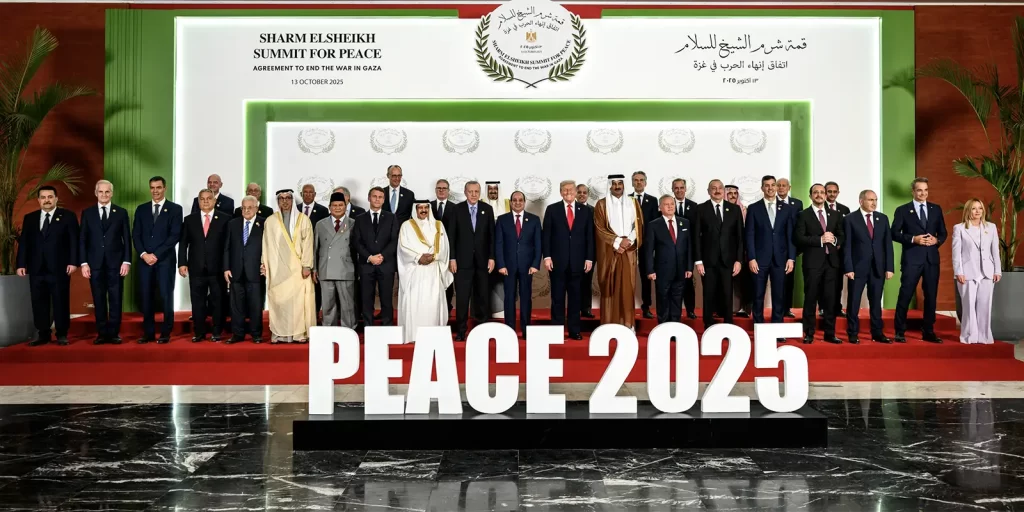
During the Peace Summit in Egypt, Trump was received as a global celebrity.
More than 30 world leaders attended the event, including representatives from France, Spain, Italy, Saudi Arabia, and the United Arab Emirates. President el-Sisi awarded Trump the Order of the Nile, Egypt’s highest civilian honor, calling him “the only leader capable of bringing peace to the Middle East.”
Pakistan’s Prime Minister Shehbaz Sharif reminded attendees that his government had nominated Trump for the Nobel Peace Prize, while Turkish President Recep Tayyip Erdoğan praised him for showing “the political will needed to stop the violence.”
Yet one notable absence loomed over the summit: Benjamin Netanyahu.
The Israeli prime minister refused to attend, citing ongoing security concerns and skepticism over Hamas’s disarmament. His absence underscored Israel’s caution toward a peace deal many in his cabinet still view as premature.
A Political Victory for Trump
Trump’s triumphant speech before the Israeli Knesset marked the highlight of his diplomatic tour. The U.S. president declared that “the long and painful nightmare is finally over,” earning standing ovations and chants of “Trump, Trump, Trump” from Israeli lawmakers.
Joined by his son-in-law Jared Kushner, Secretary of State Marco Rubio, and Defense Secretary Pete Hegseth, Trump positioned himself as the “President of Peace.” He even hinted that ending the war between Russia and Ukraine would be his next goal.
However, not everyone shared the enthusiasm. Opposition members waved signs reading “Recognize Palestine”, and several lawmakers boycotted the session, arguing that the war in Gaza is far from over.
Netanyahu introduced Trump personally, calling him “Israel’s greatest friend in the White House.” The prime minister thanked him for securing the release of hostages and for his “relentless efforts toward peace.” Trump, in turn, described Netanyahu as “not the easiest man to deal with—but that’s what makes him great.”
Rebuilding the Ruins
Beyond the fanfare, the hardest challenge lies ahead: rebuilding Gaza. The World Bank estimates the cost of reconstruction at over $53 billion, with tens of thousands of homes, schools, and hospitals reduced to rubble. Trump vowed that rebuilding would begin immediately, boasting that “no one rebuilds better than the United States.”
French President Emmanuel Macron offered France’s support to co-organize the reconstruction conference alongside Egypt, while UN Secretary-General António Guterres urged the immediate resumption of humanitarian operations. Yet, aid convoys remain stuck at Gaza’s borders, awaiting security guarantees before entering.
End or Intermission?
On the surface, Trump’s peace deal appears to mark a turning point in one of the world’s most entrenched conflicts. But history in the Middle East has shown that ceasefires often serve as pauses, not conclusions.
Between applause, medals, and grand declarations, the truth remains uncertain.
Peace in Gaza may have been proclaimed—but whether it will last is another question entirely.






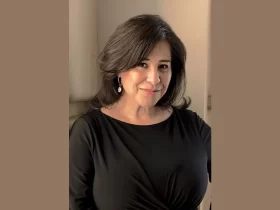
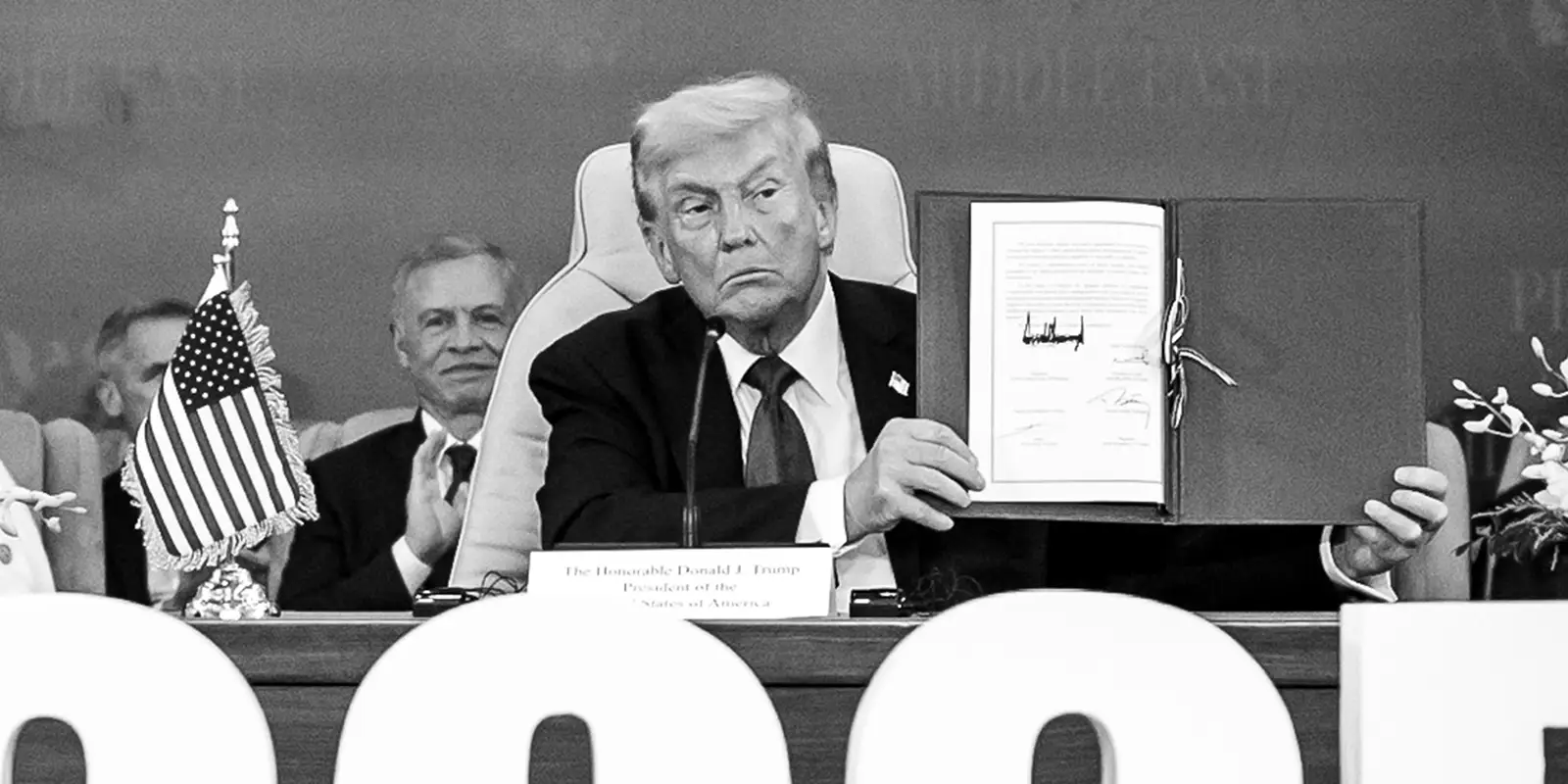










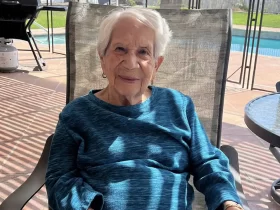

















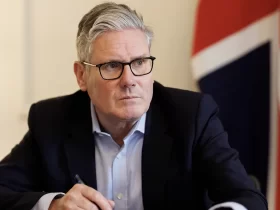


Leave a Reply